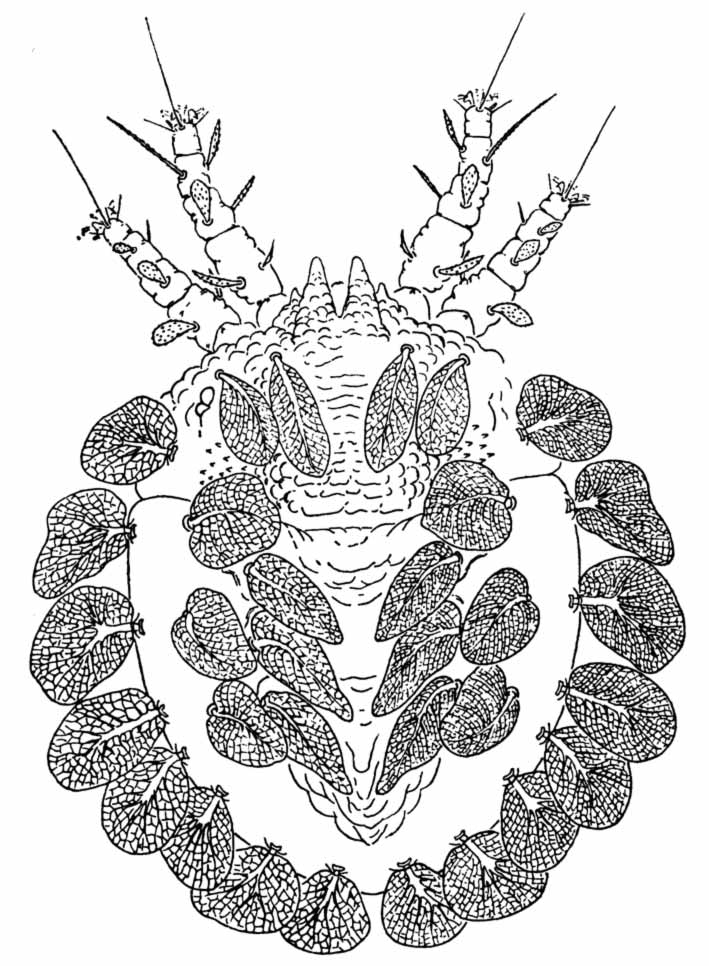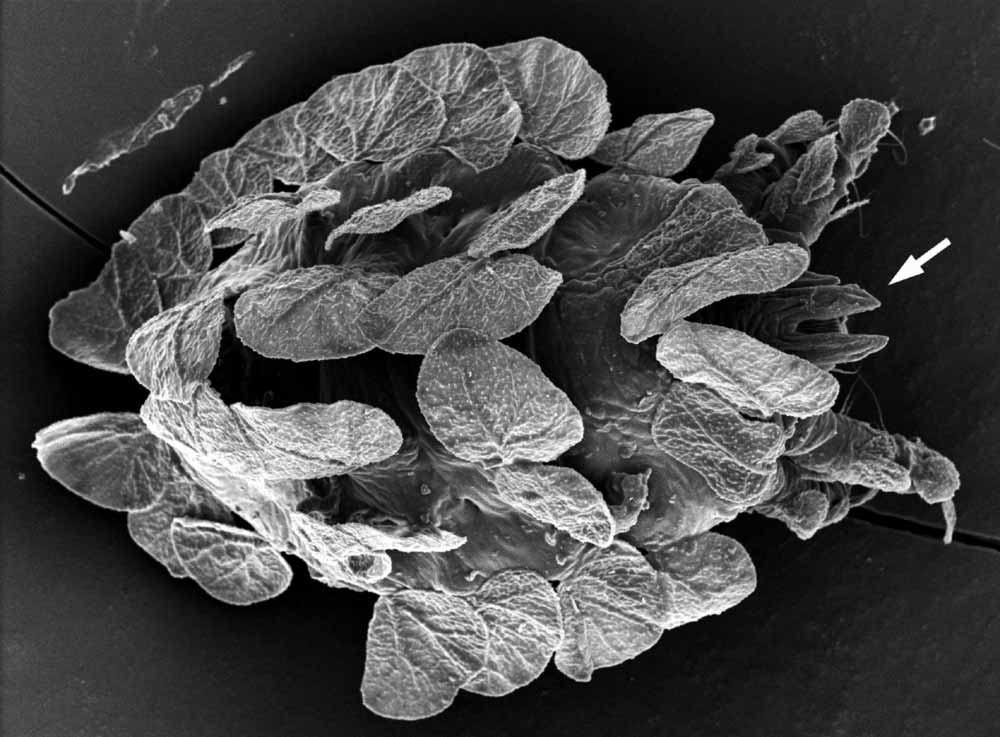Phyllotetranychus
|
Fig. 1. Phyllotetranychus romaine female dorsum (after Pritchard & Baker 1958). |
|
Fig. 2. Phyllotetranychus aegyptium adult female dorsum, arrow indicates anterior forked projection on prodorsum (image: Gary Bauchan, USDA-ARS). |
|
Fig. 3. Phyllotetranychus aegyptium adult female dorsal setae (image: Gary Bauchan, USDA-ARS). |
Key characters
- full complement of setae
- h2 not elongate
- dorsal setae shaped like leaves (broadly palmate) (Figs. 1-2)
- anterior margin of prodorsum with forked projection, prongs directed anteriorly (Fig. 2)
- ventral, genital and anal plates not developed
- 2 pairs ps setae
- 2 segmented palp
Number of species
Two - P. aegyptium, P. romaine
Authority
Sayed
Distribution
Egypt, Israel, Mauritius, Oman, Saudi Arabia, United Arab Emirates
Hosts
Latania loddigesii, Phoenix dactylifera (Arecaceae)
Colour
- red when alive; dorsal setae white
- eggs red




